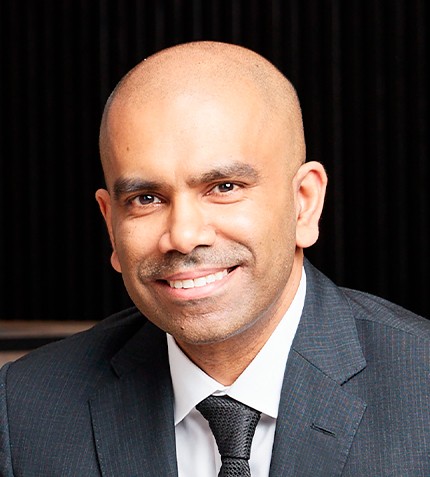
"The looming skills shortage is exacerbated by the nature of the industry and specifically: the remoteness of many operations; the sector’s economic volatility; and its sluggish embrace of diversity. Add to this the failure to integrate succession planning strategies, not recognising the change in demographics in the talent market place and lack of creativity when seeking to attract and recruit, then mining will continue to be challenged when recruiting."
Chris Stafford
PRESIDENT, C. J. STAFFORD & ASSOCIATES
Could you give us an update on the current scenario that is going on in the Canadian mining industry and how it is affecting your business?
We have been recruiting to the mining industry since 1981, have experienced all the cycles since and witnessed firsthand the challenges that mining companies have in attracting talent. Our experience is that, no matter where we are in the commodity cycle, the sector has constantly struggled to attract quality talent. At the end of the ‘super cycle’ in 2012 we saw the beginning of a prolonged downturn in the sector, one that affected every aspect of the industry. The slowdown continued for five years until early 2017, but even during these slow times when it was thought there existed an abundance of available talent, there were over 1,000 unfilled jobs in Canadian mining operations.
In the wake of retiring baby boomers, a recovery within the sector will pose a new set of challenges. We believe that the recruiting process of attracting and hiring talent will be redefined and that much of our time will be spent consulting with clients on their expectations of the recruiting process. It will be of prime importance to understand company culture and what makes “your” company better than the competition. The selection criteria may need adjusting and companies will need to respond to the needs and wants of the new hires. Our role will become even more consultative based than it has been in the past, pulling on the vast experience we have gained during the last three decades of listening to and learning from our broad client base.
Is there a shortage of skilled labor in the industry at this moment?
In my 35 plus years of experience, I can’t remember when there was ever an oversupply of talent for mining jobs across Canada and with an aging population sapping its future workforce, this is not going to change anytime soon.
Mining Industry Human Resources Council (MiHR) executive director Ryan Montpellier said that MiHR predicts that over the next 10 years, 88,000 new workers will be needed to make up for 50,000 retirement exits, alongside other shortages. And that is just MiHR’s baseline estimate, based on current industry trends and forecasts – in an expansionary economic scenario, the figure reaches 130,000. The shortage is real and will continue to plague the industry unless it broadens its scope for hiring. Our assessment is that there continues to exist a shortage and recruiting will be very competitive for professionals, operators and for trades.
What is the reason for this shortage? Is it because people are losing interest in the mining industry in terms of a profession or is there any kind of negative association with it?
The looming skills shortage is exacerbated by the nature of the industry and specifically: the remoteness of many operations; the sector’s economic volatility; and its sluggish embrace of diversity. Add to this the failure to integrate succession planning strategies, not recognising the change in demographics in the talent market place and lack of creativity when seeking to attract and recruit, then mining will continue to be challenged when recruiting.
If people are losing interest in the industry, the corrective action must lay in the hands of industry itself. I firmly believe that creative hiring policies and clearly defined career paths should serve to attract talent. It would certainly help the cause if mining companies spend more time with schools and on campus, garnering the interest of students early in their education to win their interest, a practice that has proven effective in the past with Cominco. Industry also needs to emphasize the positives: high salaries, affordable housing, progressive careers, outdoor activities, clean air and safe communities.
Do you think that people now, especially millennials, are prepared to understand the mining cycle? Do you think that there'll be an ongoing interest in being a part of the industry despite the cycle?
Many people who succeed in mining are adaptable, flexible, resilient and do not see working in a cyclical industry as a deterrent. Millennials, when entering the mining industry, more likely than not, are aware of its ups and downs. I believe that by the time students graduate and are ready to make a career choice, they are knowledgeable on the opportunity and the nuances associated with the sector.
Mining has an attraction that does not exist in many other industries: it is adventurous and often involves travel, it is culturally diverse and it offers challenges on many levels. It also pays well, and the rule of thumb is that the farther north you go the better the pay and the more responsibility you will have.
Another consideration when seeking work is that Canadian colleges and universities are educating students for both the domestic and global mining scene. This is beneficial since while one region or commodity may be inactive it may not necessarily apply to other sectors.
During the four years of academia, irrespective of where the ‘cycle’ is, the colleges and universities should do more to ensure students interact with industry.
How are new technologies and social media platforms, such as LinkedIn, affecting the business?
There is no doubt our business has been affected by such social networking platforms, but the impact has been minimal. However, we have witnessed mixed results with clients introducing online application systems that, in many cases, have limitations and fail to effectively connect with the target audience. In a competitive talent market this approach, including the latest technology of interviewing using AI, is impersonal and risks losing the interest of good candidates.










